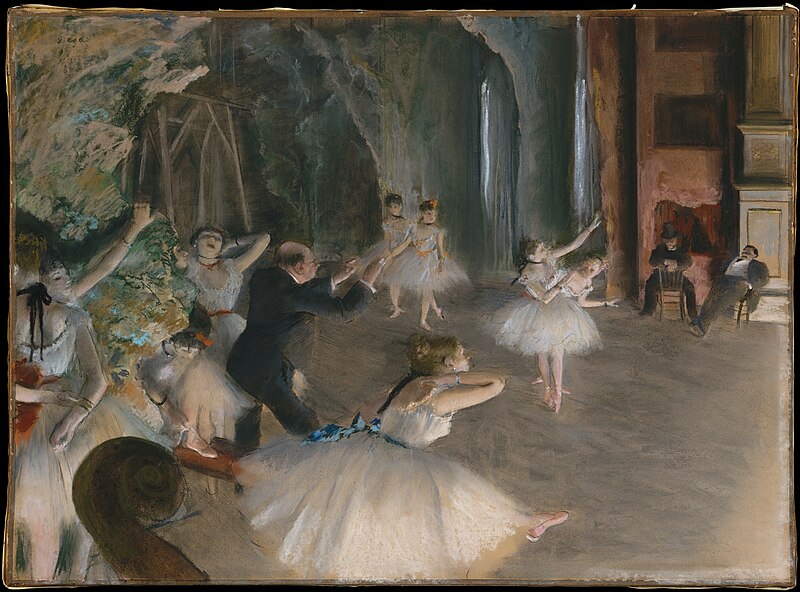Cards In This Set
| Front | Back |
|
Impressionism (1865–1885)
|
Characteristics
Capturing fleeting effects of natural lightArtists/Works Monet, Manet, Renoir, Pissarro, Cassatt, Morisot, DegasHistory: Franco-Prussian War (1870–1871); Unification of Germany (1871) |
|
Post-Impressionism (1885–1910)
|
A soft revolt against Impressionism
more arbitrary color, geometryVan Gogh, Gauguin, Cézanne, SeuratBelle Époque (late-19th-century Golden Age); Japan defeats Russia (1905) |
 Claude Monet |
 Founder of French impressionist painting, and the most consistent and prolific practitioner of the movement's philosophy of expressing one's perceptions before nature, especially as applied to plein-air landscape painting. "Impression Sunrise" gave the movement its name. |
|
Edouard Manet
|
 French painter. One of the first 19th-century artists to approach modern-life subjects, he was a pivotal figure in the transition from Realism to Impressionism. Luncheon on the Grass, Olympia |
|
Auguste Renior
|
 French artist who was a leading painter in the development of the Impressionist style. As a celebrator of beauty, and especially feminine sensuality, it has been said that "Renoir is the final representative of a tradition which runs directly from Rubens to Watteau." vibrant light and saturated color, most often focusing on people in intimate and candid compositions. The female nude was one of his primary subjects. In characteristic Impressionist style, Renoir suggested the details of a scene through freely brushed touches of color, so that his figures softly fuse with one another and their surroundings. |
|
Camille Pissarro
|
 French Impressionist and Neo-Impressionistpainter born on the island of St Thomas. contributions to both Impressionism and Post-Impressionism, as he was the only artist to exhibit in both forms. father figure to many impressionist and post impressionist artists. |
 Mary Cassatt |
American painter and printmaker. She lived much of her adult life in France, where she first befriended Edgar Degas and later exhibited among the Impressionists. Cassatt often created images of the social and private lives of women, with particular emphasis on the intimate bonds between mothers and children.
|
 Berthe Morisot |
Impressionist. She was described by Gustave Geffroy in 1894 as one of "les trois grandes dames" of Impressionism alongside Marie Bracquemond and Mary Cassatt. Her works include not only landscapes, portraits, garden settings and boating scenes, but also subjects portraying the comfort and intimacy of family and domestic life, as did her colleagues, Pierre-Auguste Renoir and Mary Cassatt.
|
 Edgar Degas |
 French artist famous for his work in painting, sculpture, printmaking and drawing. He is regarded as one of the founders ofImpressionism although he rejected the term, and preferred to be called a realist. bringing the traditional methods of a history painter to bear on contemporary subject matter, he became a classical painter of modern life. collector of Japanese prints, respect for the old masters |
|
Vincent van Gogh
|
 Dutchpost-Impressionist painter whose work, notable for its rough beauty, emotional honesty, and bold color, had a far-reaching influence on 20th-century art. self portraits, portraits, landscapes |
|
Paul Gauguin
|
 French Post-Impressionist artist. He was an important figure in the Symbolist movement as a painter, sculptor, print-maker, ceramist, and writer. His bold experimentation with coloring led directly to the Synthetist style of modern art while his expression of the inherent meaning of the subjects in his paintings, under the influence of the cloisonnist style, paved the way to Primitivism and the return to the pastoral. He was also an influential proponent of wood engraving and woodcuts as art forms. BAD FAMILY MAN :( |
 Paul Cezanne |
 French artist and Post-Impressionist painter whose work laid the foundations of the transition from the 19th century conception of artistic endeavour to a new and radically different world of art in the 20th century. Cézanne can be said to form the bridge between late 19th century Impressionism and the early 20th century's new line of artistic enquiry, Cubism. mastery of design, colour, tone, composition and draughtsmanship. His often repetitive, sensitive and exploratory brushstrokes are highly characteristic and clearly recognizable. He used planes of colour and small brushstrokes that build up to form complex fields, at once both a direct expression of the sensations of the observing eye and an abstraction from observed nature. The paintings convey Cézanne's intense study of his subjects, a searching gaze and a dogged struggle to deal with the complexity of human visual perception. |
|
Georges Seurat
|
 French Post-Impressionist painterand draftsman. He is noted for his innovative use of drawing media and for devising a technique of painting known as pointillism. A Sunday Afternoon on the Island of La Grande Jatte (1884–1886), Seurat's most famous painting, altered the direction ofmodern art by initiating Neo-impressionism, and is one of the icons of 19th century painting. |



